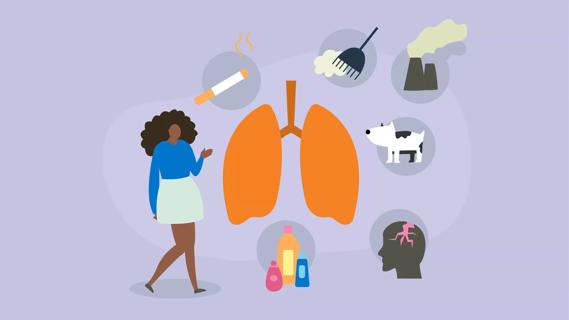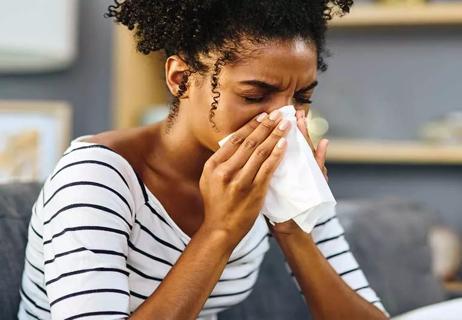Key tip: minimize your exposure

The holidays are a time of celebration and a period when we can experience sensory overload in the best way. Bright lights, memorable songs and lots and lots of smells.
Advertisement
Cleveland Clinic is a non-profit academic medical center. Advertising on our site helps support our mission. We do not endorse non-Cleveland Clinic products or services. Policy
For many people, the smells of cinnamon- or pine-scented candles or a freshly cut tree evokes good memories. But for some people, those well-known aromas present a serious health risk.
Decorations that fill your home with holiday scents can jump-start nasal congestion, sneezing and a runny nose in just about anyone. But, the health risks are higher if you have asthma, says pulmonologist Katina Nicolacakis, MD.
According to the Annals of Allergy, Asthma and Immunology, respiratory illnesses peak during the holidays. Research from the University of Washington also found roughly one-third of people with asthma have chemical hypersensitivity, and more than one-third reported irritation related to scented products.
These fragrances can be so strong for individuals with hypersensitivity to odors that they can irritate the respiratory system to the point of triggering an asthma attack.
“There are many patients for whom anything scented – candles, pine cones, right down to their live Christmas tree – will spark an asthma attack,” Dr. Nicolacakis says. “These are people who just can’t have scented things in their homes.”
However, there are things you can do to minimize your risk.
Overall, Dr. Nicolacakis says, avoidance is key. But there are a number of other ways that you can protect yourself from potential asthma attacks in the flood of holiday scents.
Advertisement
Advertisement
Learn more about our editorial process.
Advertisement

Stress can trigger and worsen asthma symptoms, like coughing and shortness of breath

Smoking, including secondhand smoke, can worsen your asthma triggers and damage your airways

Nighttime asthma attacks can be due to acid reflux, allergens and hormonal changes, but treatment can help prevent them

The effectiveness and safety of many of these options are unknown, so it’s best to stick to traditional care

Avoid triggers like dust, smoke and cold air to lessen your chances of coughing

Developmental changes like puberty and menopause can impact symptom severity

Symptoms may lessen over time, but the condition never truly goes away

You’ll likely have symptoms of both allergies and asthma at once

If you’re feeling short of breath, sleep can be tough — propping yourself up or sleeping on your side may help

If you fear the unknown or find yourself needing reassurance often, you may identify with this attachment style

If you’re looking to boost your gut health, it’s better to get fiber from whole foods